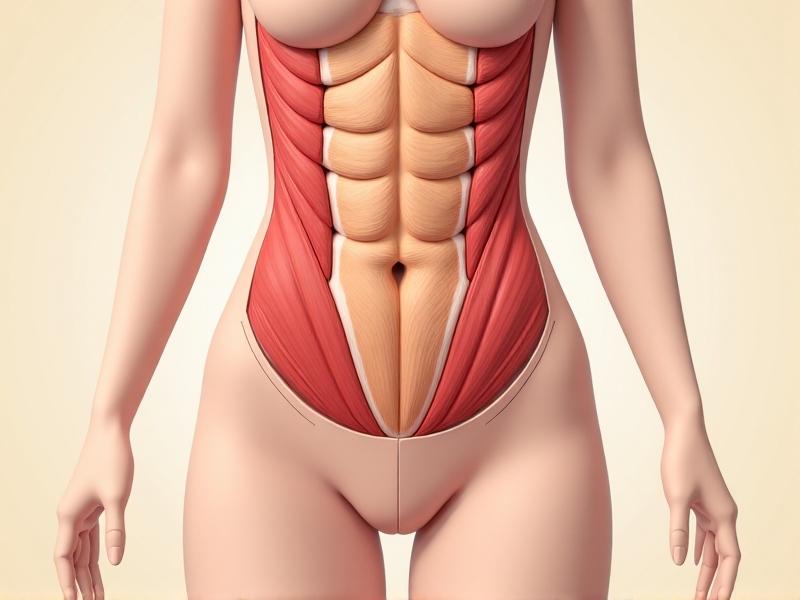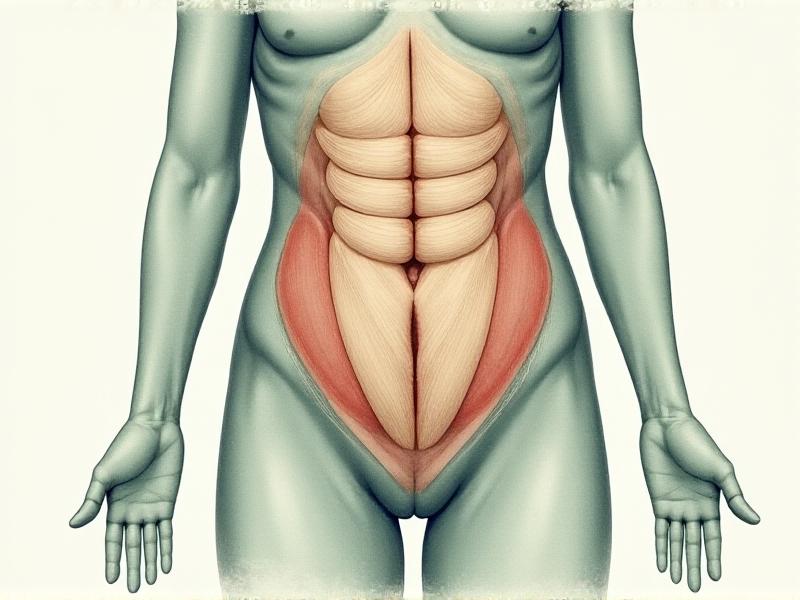Resistance Band Progressions for DR Recovery
Introduction to Resistance Band Training for DR Recovery
Resistance bands have become a popular tool in the fitness world, known for their versatility and effectiveness. For individuals recovering from Diastasis Recti (DR), these bands offer a safe and adaptable way to rebuild core strength and stability. Diastasis Recti, a condition where the abdominal muscles separate, often occurs during pregnancy but can also affect men and women due to other factors. Traditional core exercises like crunches can exacerbate the condition, making resistance bands an ideal alternative. This article will explore how to use resistance bands effectively for DR recovery, providing a comprehensive guide to progressions that can help you regain strength and confidence.

Understanding Diastasis Recti and Its Impact
Diastasis Recti is more than just a cosmetic concern; it can lead to a range of physical issues, including lower back pain, poor posture, and reduced core strength. The condition occurs when the linea alba, the connective tissue between the rectus abdominis muscles, stretches and weakens, causing a visible gap. This separation can make everyday activities challenging and hinder recovery from childbirth or other physical stressors. Understanding the anatomy and mechanics of DR is crucial for effective rehabilitation. Resistance bands, when used correctly, can help close the gap by strengthening the deep core muscles without putting undue strain on the abdominal wall.

Benefits of Resistance Bands for DR Recovery
Resistance bands offer several advantages for individuals recovering from Diastasis Recti. First, they provide a low-impact way to build strength, reducing the risk of further injury. The elastic nature of the bands allows for controlled, gradual increases in resistance, making them suitable for all fitness levels. Additionally, resistance bands can target the deep core muscles, including the transverse abdominis, which are essential for stabilizing the pelvis and spine. Unlike traditional weights, bands create tension throughout the entire range of motion, ensuring that the muscles are engaged from start to finish. This makes them an excellent tool for rebuilding core strength and improving overall functional fitness.

Getting Started: Choosing the Right Resistance Band
Selecting the appropriate resistance band is a critical first step in your DR recovery journey. Resistance bands come in various levels of resistance, typically categorized by color. Beginners should start with a lighter band and gradually progress to higher resistance as their strength improves. It's also important to choose a band that is long enough to accommodate a range of exercises. Look for bands made from durable, latex-free materials to ensure safety and longevity. Some bands come with handles or loops, which can provide added comfort and versatility. Taking the time to choose the right band will set the foundation for a successful recovery program.
Basic Resistance Band Exercises for DR Recovery
Starting with basic exercises is essential for building a strong foundation. Begin with movements that focus on engaging the deep core muscles without causing strain. One effective exercise is the standing resistance band pull-apart. Stand with your feet hip-width apart, holding the band with both hands in front of your chest. Pull the band apart by moving your hands outward, keeping your core engaged. Another great exercise is the seated resistance band row. Sit on the floor with your legs extended, loop the band around your feet, and pull the band towards your torso while keeping your back straight. These exercises help activate the core muscles and improve posture.
Intermediate Resistance Band Exercises for DR Recovery
As your strength improves, you can progress to more challenging exercises that further engage the core and surrounding muscles. The resistance band deadlift is an excellent intermediate exercise. Stand on the band with your feet hip-width apart, holding the ends of the band in each hand. Hinge at your hips to lower your torso towards the floor, keeping your back straight, then return to standing. Another effective exercise is the resistance band side plank. Loop the band around your thighs and assume a side plank position. Lift your top leg against the resistance of the band, keeping your core engaged. These exercises help build stability and strength in the entire core region.
Advanced Resistance Band Exercises for DR Recovery
For those who have built a solid foundation and are ready for more advanced movements, there are several challenging exercises that can further enhance core strength and stability. The resistance band Russian twist is a powerful exercise for the obliques. Sit on the floor with your knees bent, loop the band around your feet, and hold the ends of the band. Twist your torso from side to side, keeping your core engaged. Another advanced exercise is the resistance band mountain climber. Loop the band around your feet and assume a plank position. Alternate bringing each knee towards your chest against the resistance of the band. These exercises provide a comprehensive workout for the entire core.
Incorporating Resistance Bands into a Full-Body Workout
While resistance bands are excellent for core recovery, they can also be incorporated into a full-body workout to enhance overall fitness. Exercises like the resistance band squat, where you stand on the band and hold the ends while performing a squat, engage the lower body and core. The resistance band overhead press targets the shoulders and upper body while also requiring core stability. By combining these exercises with your DR recovery routine, you can create a balanced workout that promotes overall strength and endurance. This holistic approach ensures that all muscle groups are engaged, supporting a more comprehensive recovery.
Tips for Safe and Effective Resistance Band Training
To maximize the benefits of resistance band training and minimize the risk of injury, it's important to follow a few key guidelines. Always start with a proper warm-up to prepare your muscles and joints for exercise. Focus on maintaining proper form throughout each movement, ensuring that your core is engaged and your movements are controlled. Avoid overstretching the band, as this can lead to snapping and potential injury. Gradually increase the resistance level as your strength improves, but listen to your body and avoid pushing beyond your limits. Finally, incorporate rest days into your routine to allow your muscles time to recover and rebuild.
Monitoring Progress and Adjusting Your Routine
Tracking your progress is essential for staying motivated and ensuring that your resistance band training is effective. Keep a workout journal to record the exercises you perform, the resistance level used, and any notes on form or difficulty. Regularly assess your core strength and the closure of the DR gap by performing self-checks or consulting with a healthcare professional. As you progress, adjust your routine by increasing the resistance level, adding new exercises, or increasing the number of repetitions. This ongoing assessment and adjustment will help you continue to make progress and achieve your recovery goals.
Conclusion: Embracing Resistance Bands for a Stronger Core
Resistance bands offer a safe, effective, and versatile way to recover from Diastasis Recti and build a stronger core. By starting with basic exercises and gradually progressing to more advanced movements, you can rebuild your core strength and stability without risking further injury. Incorporating resistance bands into a full-body workout can enhance overall fitness, while following safety guidelines ensures a positive and effective training experience. Monitoring your progress and adjusting your routine as needed will help you stay on track and achieve your recovery goals. Embrace the power of resistance bands and take the first step towards a stronger, healthier you.








